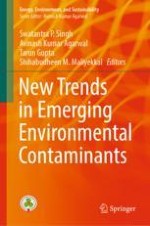This book is based on recent trends for the research in emerging environmental contaminants in different compartment of the environment. It provides a recent understanding for the fate, transport, and degradation of emerging contaminants in different environmental sectors, including water, air, and soil. The contents discuss the fate and transport of microplastics, PPCPs, along with the method of detection and degradation. It includes removal of variety of pollutants including microplastics, pharmaceuticals, and personal care products from the water using adsorption technique, electrooxidation, membrane technology and other advance oxidation methods. This volume will be of great value to those in academia and industry involved in environmental science and engineering research.
